Text

4. A) the meaning of the poem can be related to the materiality because many great ideas strike us when we can’t write something down. Good thoughts and great ideas come at any time, especially when you’re not able to write it down fast enough.
4. B) Ideas that are so good they need to be written down are a surprise that will leave you feeling acrid if you don’t write it down and remember it. The placement of the piece on the envelope’s increases that hurriedness of writing the piece, doubling the panicked emotions behind the writing.
2 notes
·
View notes
Text
Poe’s “Murders in the Rue Morgue” is indebted to the periodical format because the story centers around two men who aren’t affiliated with the police in solving a murder. The two wouldn’t have known about the murders if they didn’t read the paper. Poe’s short story finds meaning in periodicals because it highlights one of the reasons behind their publishing. Putting articles out in a newspaper, such as news of murder investigations that should be publicly aware, it invites the public to give their analysis of the article for commercial purposes and potential aid in the articles’ subjects. The relation between “analytical power” and “simple ingenuity” is that they can be one and the same. A person may think very analytically, displayed by Dupin and the narrator, who thought through multiple aspects of the murder the police did not. The short story asks the reader to pay attention to everything that has been presented and to connect other information given or compared with the subject.
There can be many parallels and metaphors drawn from Poe’s “The Balloon Hoax” and mass publishing. In the beginning of the balloon’s description, the change from hydrogen gas to “coal gas” can be paralleled with the change from handwritten publications to printing press publications. It’s cheaper in the long run to get a machine to do the work with less errors and faster turnout, more efficient to meet demands of printing, and easier to collect the materials for. Without being tossed around in the sea of employment, competence, and the limiting qualities of man, the mass publication process requires only adjustment of letter arrangements. While there are more working pieces that require prior knowledge to be able to operate such as the rigging of the balloon and mechanical components of the printing press, there are less factors keeping the books from being printed by being regulated with a singular machine. Just as how the balloon needs to be monitored for the proper gas pressure to stay adrift, the publishers need to monitor their sales as well as sales of other books to keep afloat in the rapidly growing literary society. 
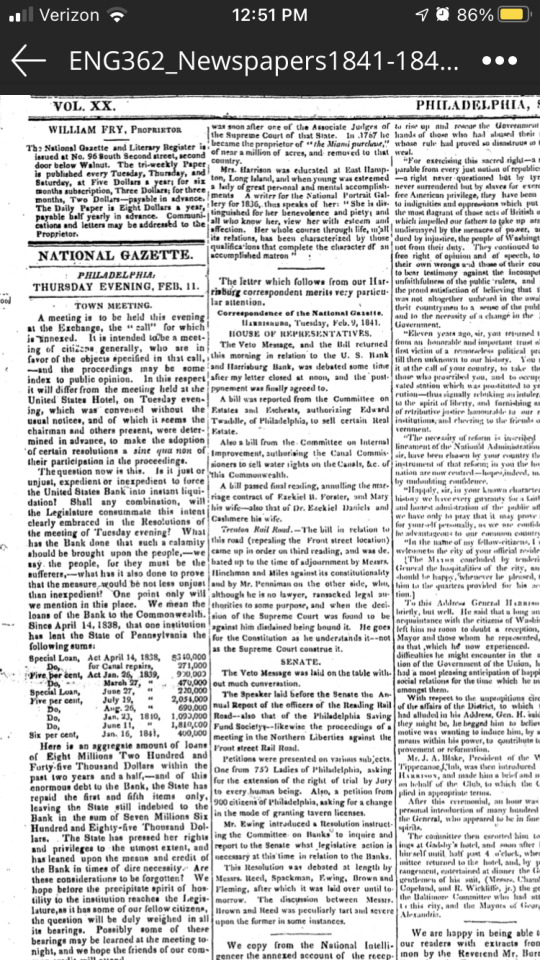
At a first glance, this copy of the National Gazette appears almost overwhelming with uniform text periodically separated with data pertaining to the article. Right on the first page, 6 columns, 10 stories, all for various things ranging from murder, politics, and other local news. All these stories are packed together with small spacing, but solid vertical lines to keep the reader in the correct column, and large dashes between stories in a column. The reading of broadsheet feels slightly more overwhelming with all the different words so tightly packed together than compared to a book with less content per page.
I’ve never liked reading newspapers. Not just because I never took interest in what was newsworthy, but because of their structure. Newspapers are large, generally 12x22in, but the pages are so thin they tend to collapse under their own weight when fully open. Their thinness is also irritating because any light shone from behind makes the opposite side of printing show through. Their unbound nature also increases my dislike. Unlike a book where the pages are numbered and will stay in order unless violently disrupted, a newspaper keeps its pages organized by the folding.
3 notes
·
View notes
Text

At a first glance, this copy of the National Gazette appears almost overwhelming with uniform text periodically separated with data pertaining to the article. Right on the first page, 6 columns, 10 stories, all for various things ranging from murder, politics, and other local news. All these stories are packed together with small spacing, but solid vertical lines to keep the reader in the correct column, and large dashes between stories in a column. The reading of broadsheet feels slightly more overwhelming with all the different words so tightly packed together than compared to a book with less content per page.
I’ve never liked reading newspapers. Not just because I never took interest in what was newsworthy, but because of their structure. Newspapers are large, generally 12x22in, but the pages are so thin they tend to collapse under their own weight when fully open. Their thinness is also irritating because any light shone from behind makes the opposite side of printing show through. Their unbound nature also increases my dislike. Unlike a book where the pages are numbered and will stay in order unless violently disrupted, a newspaper keeps its pages organized by the folding.
3 notes
·
View notes
Text
Those in power are blind to those who are spilling their blood for their country, not seeing the damage they cause in their pursuit of continuation of their power.
In Ozymandias, the king is prideful of his works and rule, but all around him is decay and wreckage. Ozymandias is blind to the harm of his works because he sees his works as mighty, but his aftermath is worse than what came before.

1.) Death or Liberty depicts Radical Reform overpowering Brittania. Radical Reform is backed by murder, robbery, starvation, slavery, blasphemy, and immorality, with the writing of The Age of Reason. Brittania is backed by the rock of religion, the lion fierce national loyalty, and seemingly God, fighting with The Laws as their weapon. Radical Reform wears a mask to hide its true face.
2.) The image assumes the viewer has prior knowledge of religion and politics, sticking with the older Christian views of Brittania. This reform that is becoming more and more popular and powerful is directly coming after the very heart of Brittania.
3.) Death or Liberty doesn’t show the good the reform can do for Brittania. Reform is only shown as destructive instead of attempting to right any wrongs in current Brittania. Current Brittania is already viewed as beautiful and backed by God, while the reform is straight from hell.
4.) Brittania doesn’t want to change because it sees itself as already holy and blessed. Even though all the supporters of Radical Reform can be found in Brittania before the reform, they are still seen as a product of reform.
3 notes
·
View notes
Text

1.) Death or Liberty depicts Radical Reform overpowering Brittania. Radical Reform is backed by murder, robbery, starvation, slavery, blasphemy, and immorality, with the writing of The Age of Reason. Brittania is backed by the rock of religion, the lion fierce national loyalty, and seemingly God, fighting with The Laws as their weapon. Radical Reform wears a mask to hide its true face.
2.) The image assumes the viewer has prior knowledge of religion and politics, sticking with the older Christian views of Brittania. This reform that is becoming more and more popular and powerful is directly coming after the very heart of Brittania.
3.) Death or Liberty doesn’t show the good the reform can do for Brittania. Reform is only shown as destructive instead of attempting to right any wrongs in current Brittania. Current Brittania is already viewed as beautiful and backed by God, while the reform is straight from hell.
4.) Brittania doesn’t want to change because it sees itself as already holy and blessed. Even though all the supporters of Radical Reform can be found in Brittania before the reform, they are still seen as a product of reform.
3 notes
·
View notes
Text
When searching in Pinterest for the subject of the “Romantic Era” the tool obscures the variation of the subject. The majority of the tool displays is women’s fashion during the Romantic Era. There isn’t a bias to the analysis, but it suggests the user is interested in fashion instead of art or literature or other aspects of life during the time period. Where Pinterest is a good tool to find visual aspects of a subject, but doesn’t give a lot of variety to the visuals. While a more specific search would get different results, the umbrella search just shows a lot of Jane Austin undertones.
2 notes
·
View notes
Text
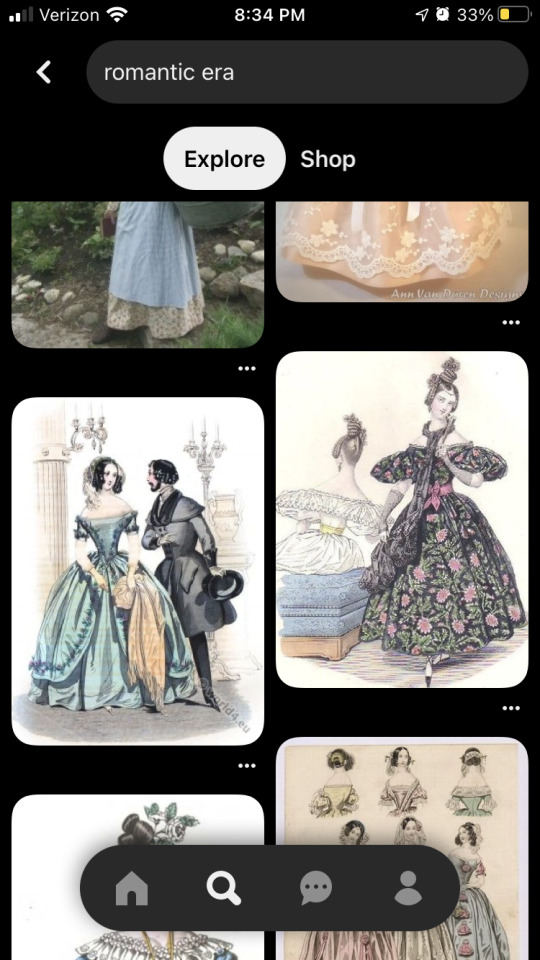
Since Pinterest is mainly used for images and references, it makes sense that there aren’t a lot of examples of the Romantic Era outside of clothing. While creating a profile, Pinterest requires the user to choose 5 categories of likes such as writing, fandoms, comedy, food, and many more. These categories will take up the majority of the user’s home page. There is aesthetic content associated with the “Romantic Era” as well as small pieces of writing, but the overwhelming majority is dresses and women’s fashion. Coming from a literary perspective, Pinterest doesn’t provide a lot of information aside from how the characters from Jane Austin might’ve looked and dressed. Pinterest is a good tool to see what the “Romantic Era” would look like, the way society displays itself while so many works were written. The tool creates a portal to see the visual social norms, similarities and differences from our own society.
2 notes
·
View notes
Text
According to Pinterest’s Help Center, “Pinterest is a visual discovery engine for finding ideas like recipes, home and style inspiration, and more. With billions of Pins on Pinterest, you’ll always find ideas to spark inspiration. When you discover Pins you love, save them to boards to keep your ideas organized and easy to find.”
Pinterest is a tool to find images or gifs for just about anything. It gives users a plethora of ideas, as well as a site search engine to find more specifics of what you’re looking for. Users can create “boards” for posts related to a theme, from styles, to fandoms, to culinary recipes, to general knowledge. As for literary criticism, I’m not exactly sure what I’ll find because there’s just so much to find.
www.pinterest.com
2 notes
·
View notes
Text
A World of Change and Possibilities
The smallest things can mean the biggest things. Many items are focused around the changing of technologies, but they all pertain to good memories.

Full collection
2 notes
·
View notes
Text
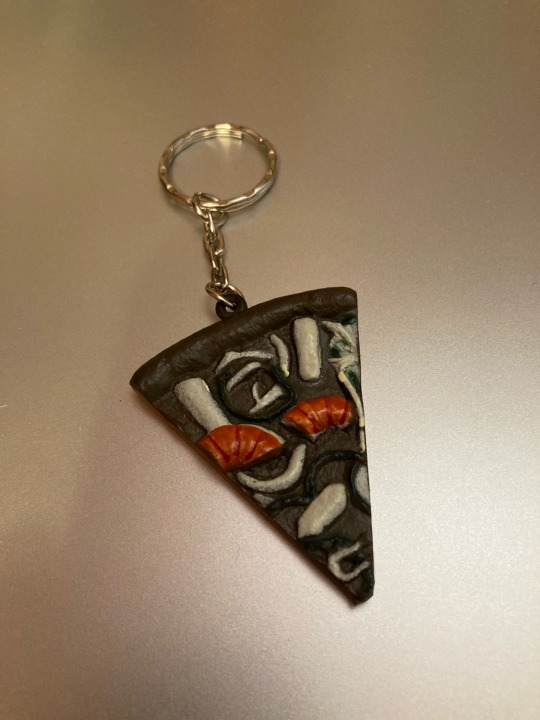

Day 10 of the “Wundertopf”. I added my pizza keychain. I find pizza to be one of the most wonderful foods, not just because it’s pizza, but you can make anything a pizza. I mean, look at the thing. It looks like a lobster tail, onions, and rubber on a dark chocolate crust
3 notes
·
View notes
Text


Day 9 of the “Wundertopf”. I added a used ink cartridge from my favorite pen. I find I experience a wonderful oxymoron of satisfying irritation when I run out of ink, signifying I managed to not lose my pen before I ran out of ink
2 notes
·
View notes
Text
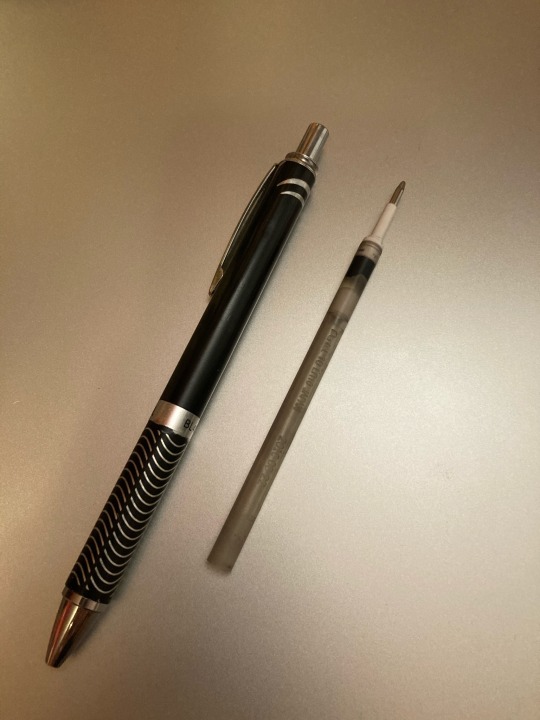
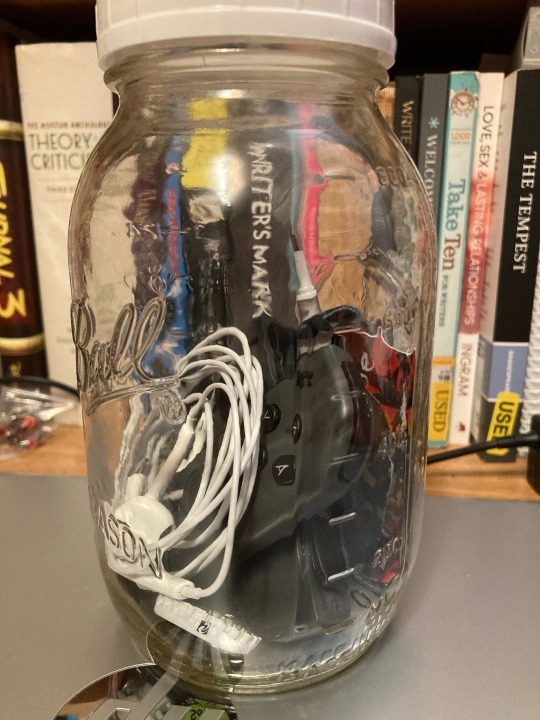
Day 9 of the “Wundertopf”. I added a used ink cartridge from my favorite pen. I find it a wonderfully odd oxymoron to start running out of ink and feel that satisfying irritation that you managed to use the entire cartridge without losing the pen
2 notes
·
View notes
Text

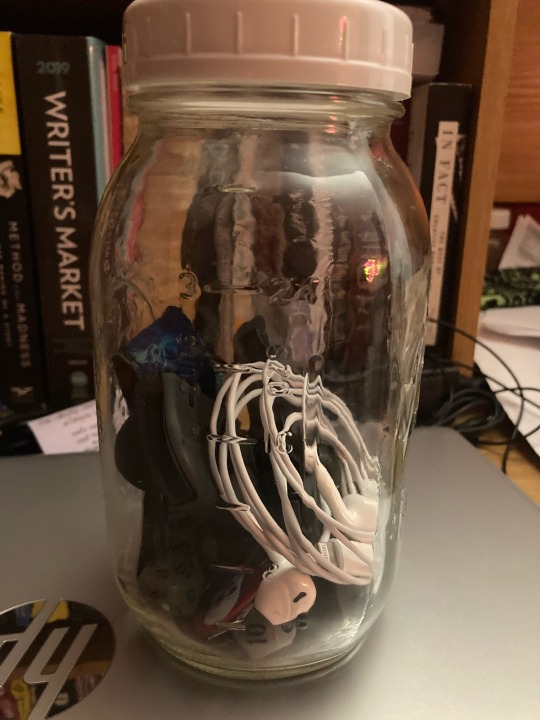
Day 8 of the “Wundertopf”. I added a pair of my earbuds. The history of headphones is an interesting evolution of design and compact-ability. I find music to be one of the most wonderful things in life. It expresses emotions that words fail to evoke.
2 notes
·
View notes
Text

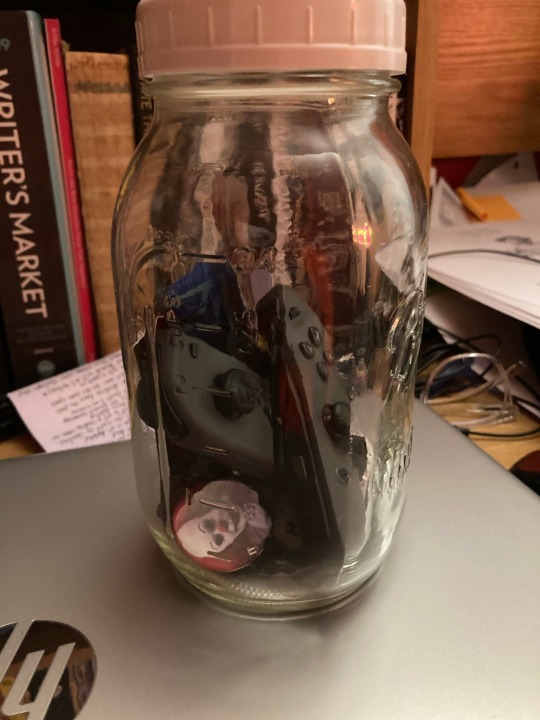
Day 7 of the “Wundertopf”. I added my Pennywise button. I find Steven King to be a wonderful writer. It is one of my favorite novels solely for the character development King weaves throughout all 1138 pages, and how he builds a character so roundly in a few sentences just to kill them off as collateral. A wonderfully dark book I keep going back to
1 note
·
View note
Text

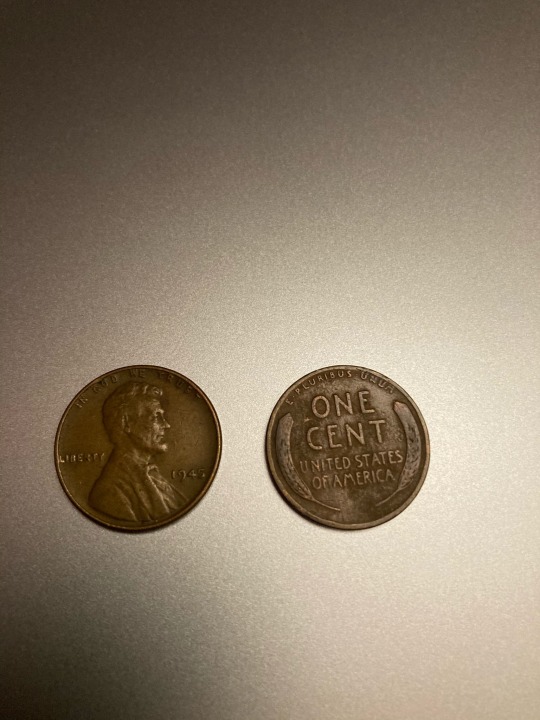
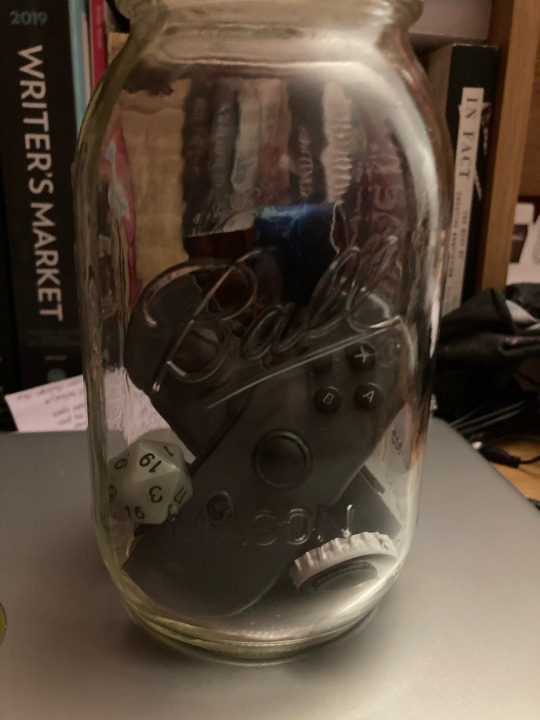
Day 6 of the “Wundertopf”. I added two wheat pennies from 1929 and 1945. I find it crazy that coins that old could still be in circulation, or even worth over 100x their assigned worth. I find antiques wonderfully interesting but not enough to fill my house with them
2 notes
·
View notes

